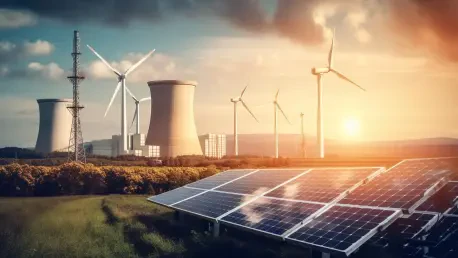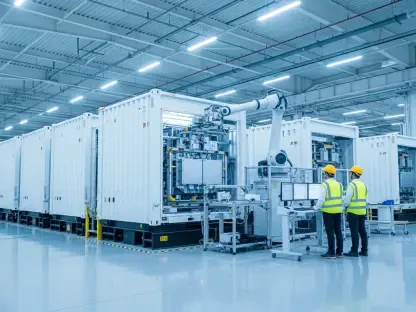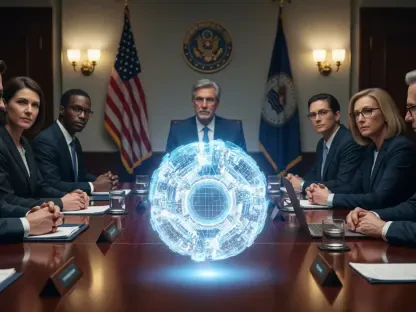In a significant development for clean energy stakeholders, the Senate Finance Committee has unveiled a revised budget bill that softens the cuts to the Inflation Reduction Act (IRA) incentives, as initially proposed by the House. This revised budget bill is expected to have considerable implications for the wind and solar energy sectors, as it retains the full life transferability of certain energy tax credits. Unlike the House’s plan to terminate transferability for credits like 45Q, 45Z, and 45X after 2027, the Senate version offers these credits a continued lifeline. However, the residential solar landscape may face hurdles with the proposed rapid phase-out of the 30% 25D tax credit within 180 days of the bill’s enactment, raising concerns about future residential solar investments.
Implications for Energy Tax Credits
Wind and Solar Energy
The Senate bill presents a more flexible framework compared to the House by removing the requirement that technology-neutral clean electricity projects must begin within 60 days of signing and finish by 2028 to qualify for tax credits. For sectors like nuclear, geothermal, and hydropower, the Senate has extended the eligibility for 45Y and 48E credits until construction begins by 2033, allowing for a more strategic development plan. However, wind and solar projects encounter reduced incentives, with only a 60% credit available if the project starts by 2026 and further decreased benefits after 2027. This move has sparked apprehension among industry advocates who argue that such restrictive timelines could derail ongoing large-scale wind and solar projects, leading to potential cancellations.
Criticisms and Concerns
Industry voices, such as Harry Godfrey of Advanced Energy United, have expressed concerns over these stipulations. The compressed timelines and lease prohibitions raise red flags for larger projects that demand significant planning and investment. These constraints also stir unease among domestic manufacturers about maintaining sustainable operations amidst fluctuating demand and quick transitions. Jefferies, a prominent investment bank, interprets the Senate bill as disadvantageous for companies like Sunrun, SolarEdge Technologies, and Enphase Energy. Nevertheless, storage projects might find the silver lining in remaining eligible for certain extended credits, despite the overarching challenges presented by the bill.
Foreign Entities and Compliance Framework
Carbon Sequestration and Advanced Manufacturing
The Senate maintains the original timelines for 45Q carbon sequestration and 45X advanced manufacturing credits, contrasting with the House’s plan to conclude them after 2028. However, both versions agree on terminating wind components’ eligibility for 45X after 2027. Notably, the Senate introduces an adjusted compliance framework for addressing the restrictions related to foreign entities of concern, potentially influencing project qualifications. This framework is perceived by some as more feasible than the House’s stringent provisions, although it carries implications for clean tech projects involving international partnerships.
Path Forward for Stakeholders
Stakeholders are encouraged to actively lobby for amendments as the bill progresses through the Senate, identifying junctures where adjustments might enhance its effectiveness. While some sectors view the Senate’s proposal as a more feasible approach compared to the House’s, other sectors remain wary of tight timelines and restricted credits. This ongoing legislative dialogue marks a balancing act between promoting innovation in the clean energy domain and ensuring financial practicality. Advocates urge revisions that open broader opportunities and adapt to an evolving market landscape.
Legislative Tug-of-War: Balancing Innovation and Fiscal Concerns
In a notable shift for the clean energy community, the Senate Finance Committee has released a revised version of the budget bill, which proposes softer cuts to the Inflation Reduction Act (IRA) incentives compared to the House’s version. This change is expected to significantly affect the wind and solar energy sectors, as the new bill maintains the transferability of vital energy tax credits for their entire duration. The House had proposed ending the transferability of key credits like 45Q, 45Z, and 45X after 2027, but the Senate’s proposal allows these credits to continue, offering stability to those investing in clean energy projects. However, a potential challenge looms for the residential solar market due to a proposed quick phase-out of the 30% 25D tax credit, which would occur within 180 days of the bill becoming law. This phase-out could impact future investments in residential solar installations, raising concerns among stakeholders about the long-term viability and growth of the residential solar sector in the United States.









